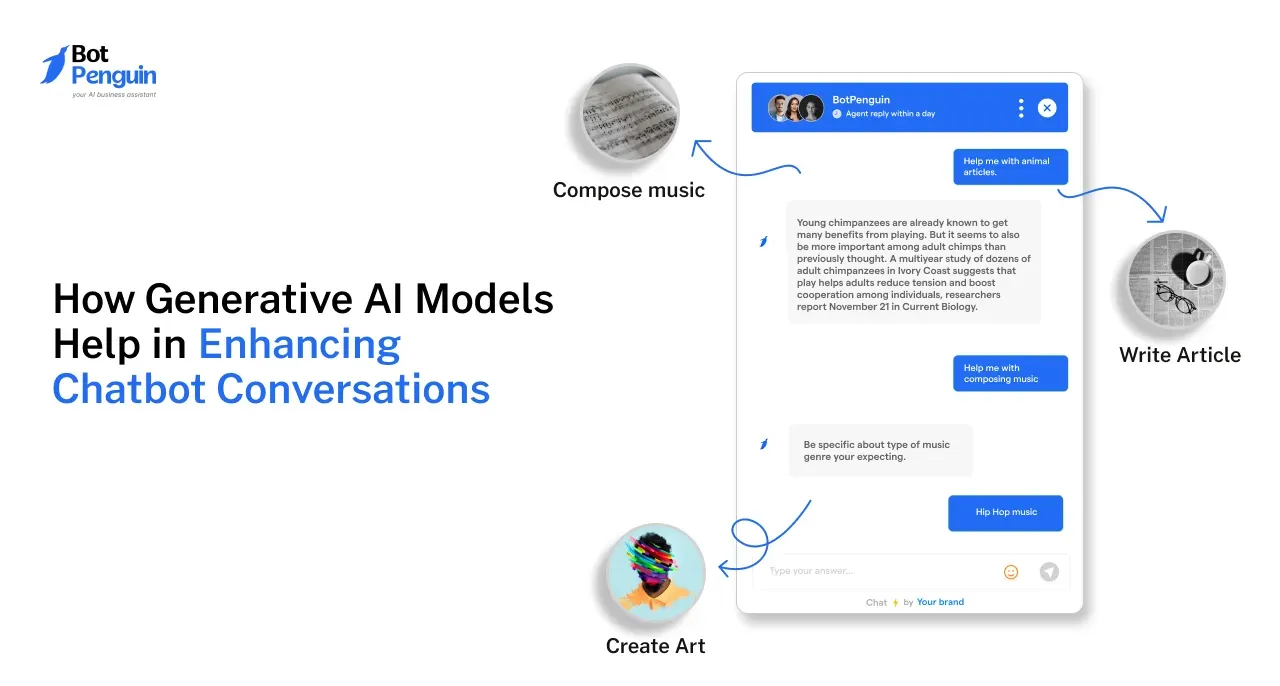Do you need help converting your subscribers into paying customers? Obtaining someone's email address is just the start of your task; it doesn't mean your work is done. This blog will teach you how to avoid email marketing blunders.
With a return of $38 for every dollar invested, email marketing is still one of the most profitable platforms for content marketers. According to studies, customers who purchase goods promoted by email do so at a 138% higher rate than those who do not. And compared to non-automated emails, automated emails produce 320% more money. Do you consider email to be a "dead" channel?
We've identified 5 crucial errors every company commits after sending millions of email messages and working with thousands of email marketing companies. Before we get to these mistakes, let us learn about what is email automation first.
What is Email Automation?
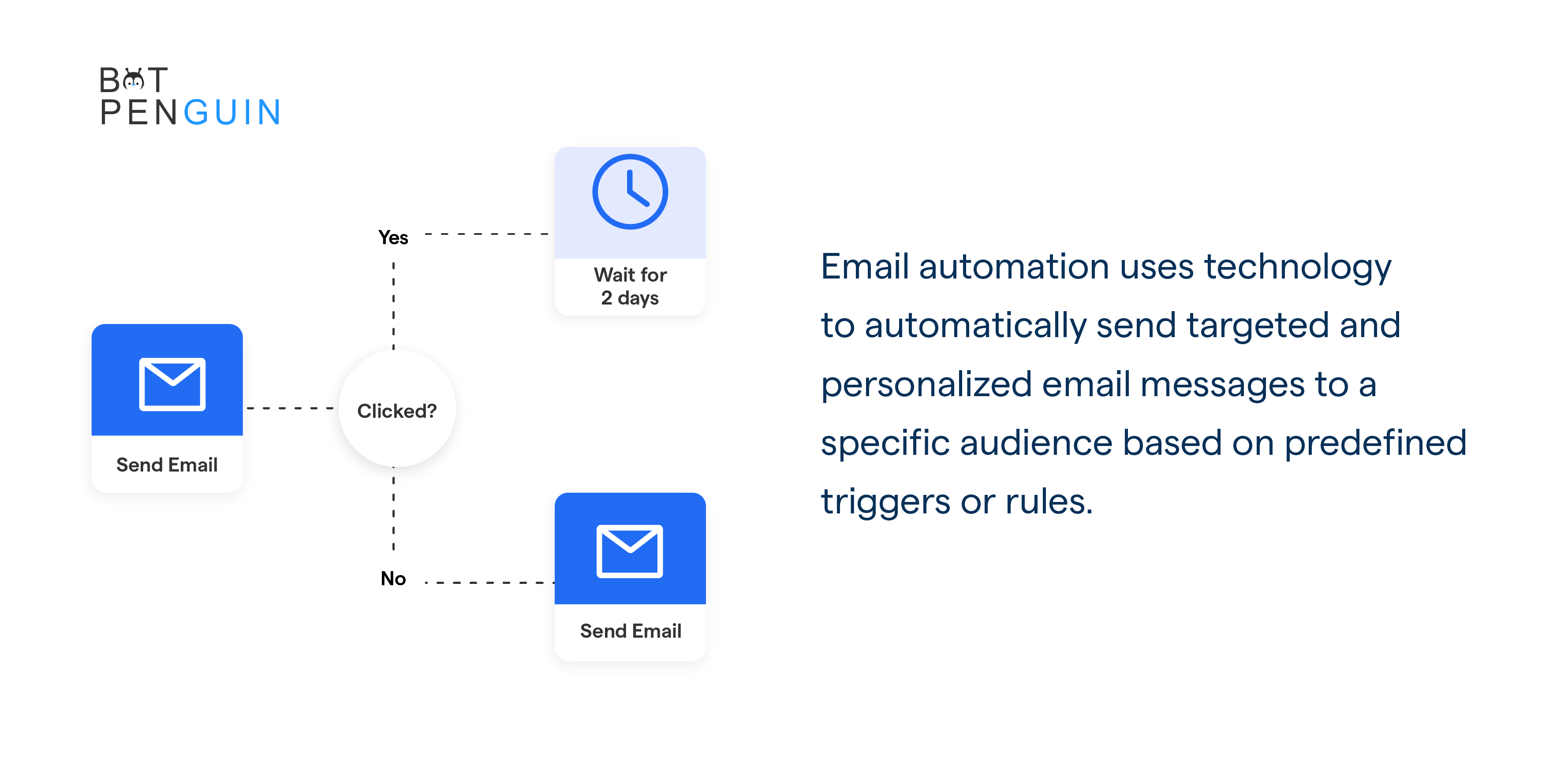
Email automation uses technology to automatically send targeted and personalized email messages to a specific audience based on predefined triggers or rules.
Email automation can be used for various purposes, such as lead nurturing, customer onboarding, product promotion, and engagement campaigns. It can help businesses save time, streamline their marketing efforts, and provide their audience with more relevant and timely communication.
Email automation involves:
- Setting up a series of automated emails triggered by a specific action or behavior, such as subscribing to a newsletter.
- Making a purchase.
- Abandoning a shopping cart.
These emails are designed to deliver relevant and targeted content to the recipient at the right time, based on their specific needs and interests.
Some common examples of email automation include welcome emails to new subscribers, abandoned cart emails to remind customers about items left in their shopping cart, and post-purchase follow-up emails to thank customers for their purchase and encourage them to leave a review.
Email automation can be a powerful tool for businesses of all sizes to engage with their audience, build relationships, and drive revenue. However, it's important to use email automation effectively and avoid common mistakes such as failing to personalize your emails, not testing your emails, and not tracking your results.
5 Deadly Email Automation Blunders to avoid.
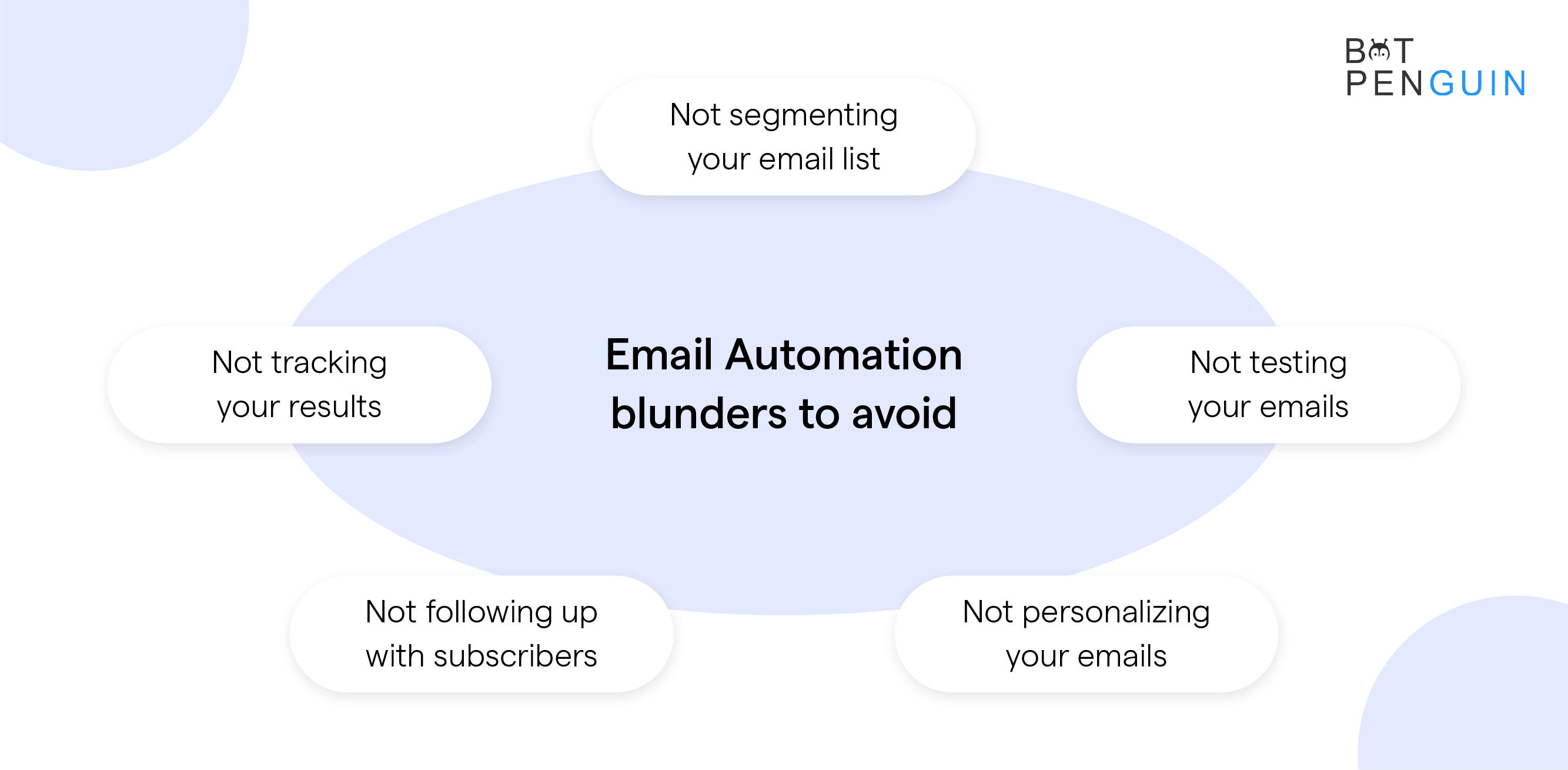
Email automation is a powerful tool for businesses to improve communication and engage with their audience. However, some common mistakes can sabotage the effectiveness of email automation. Here are 5 killer mistakes to avoid with email automation.
1. Not segmenting your email list
Not all subscribers are the same, and sending the same message to everyone on your email list can lead to poor engagement and high unsubscribe rates. Segmenting your email list based on interests, behavior, and location can ensure your messages are relevant and engaging.
Segmenting your list is a beneficial strategy as it enables you to categorize your recipients in a way that makes your message more relevant to each group. You may segment your list using many factors, such as subscriber behavior, customer type, ZIP code, sign-up date, and interests. The more precise you can be in your segmentation efforts, the more possible user response levels will rise.
2. Not testing your emails
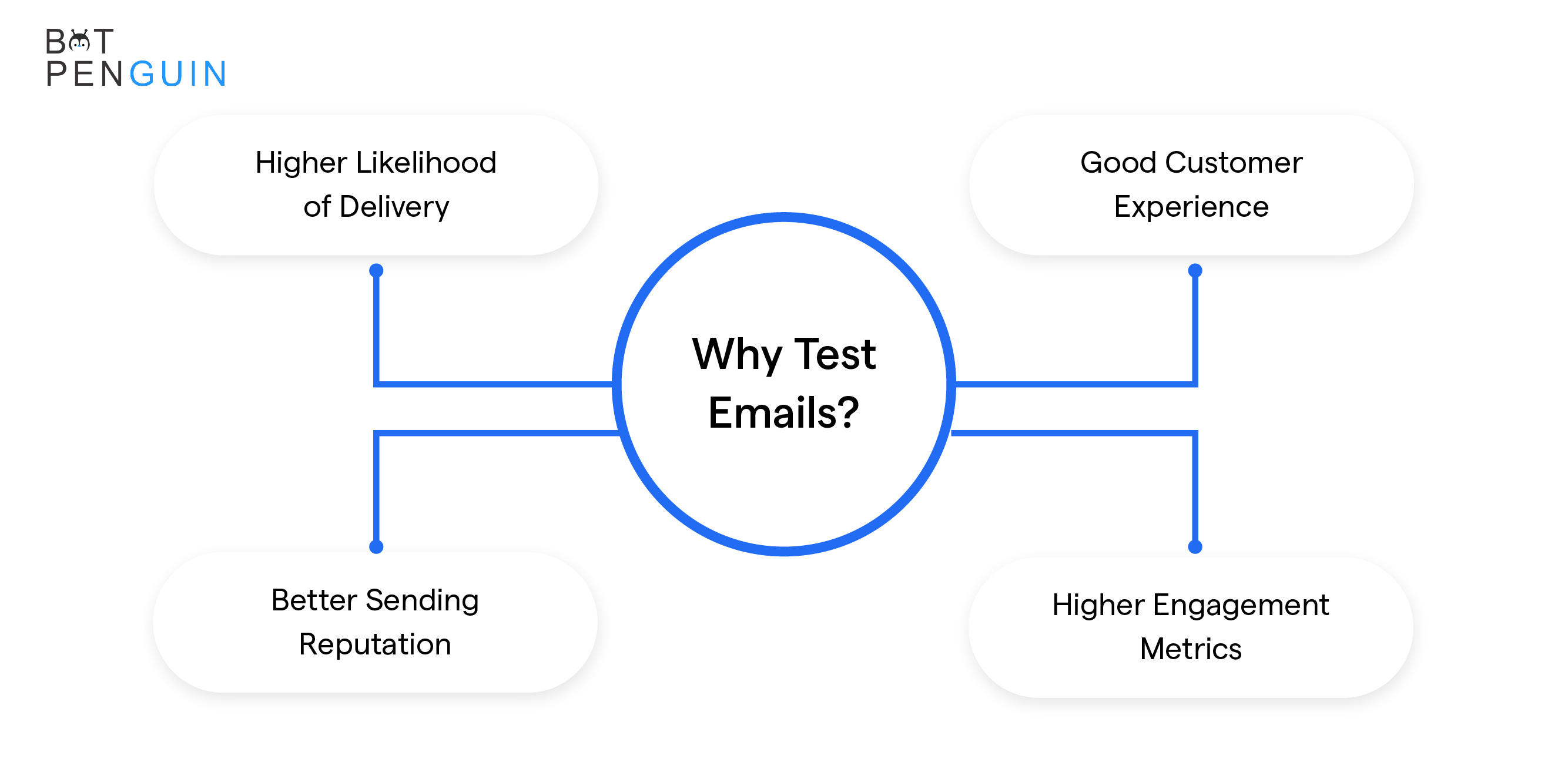
Sending emails without testing them can result in poor deliverability, low open rates, and high bounce rates. Before sending an email, test it on different devices and email clients to ensure it looks good and functions properly.
Failing to test your emails can result in various issues, including
- Broken links: If a link in your email is not working, it can frustrate your audience and potentially lead to lost conversions.
- Poor formatting: Emails that don't display properly on different devices or email clients can make your brand look unprofessional.
- Typos and grammatical errors: Simple mistakes can undermine credibility and professionalism.
- Spam filter issues: Emails that trigger spam filters can end up in the spam folder, resulting in lower engagement rates and potentially damaging your sender's reputation.
To avoid these issues, thoroughly test your emails before sending them to your audience. It involves checking the content for errors, ensuring links work correctly, testing the email on various devices and email clients, and verifying that the email passes spam filter tests. By testing your emails, you can catch and fix issues before they reach your audience, ensuring that your emails are effective and enhancing your brand reputation.
3. Not personalizing your emails
Personalized emails that address subscribers by name and offer tailored content can be more effective than generic emails. Use data and automation tools to create personalized messages that resonate with your subscribers.
Failing to personalize your emails can result in various issues, including:
- Reduced engagement: If your emails are not personalized, your audience may feel they are receiving generic, mass emails, leading to lower engagement rates.
- Decreased open rates: Personalized emails are more likely to be opened than generic ones, as they feel more relevant and tailored to the individual recipient.
- Higher unsubscribe rates: If your audience feels they are receiving irrelevant or spam emails, they are more likely to unsubscribe from your email list.
To avoid these issues, it's essential to personalize your emails as much as possible. It involves segmenting your email list and creating targeted email campaigns that speak to each segment's specific interests and needs. You can also use personalization tactics such as including the recipient's name in the email, referencing their past purchase history, or tailoring the email content based on their location or other demographic information.
By personalizing your emails, you can enhance your relationship with your audience and improve the effectiveness of your email campaigns. Personalized emails are more likely to be opened, clicked on, and shared, leading to higher engagement rates, increased conversions, and a more substantial brand reputation.
4. Not following up with subscribers
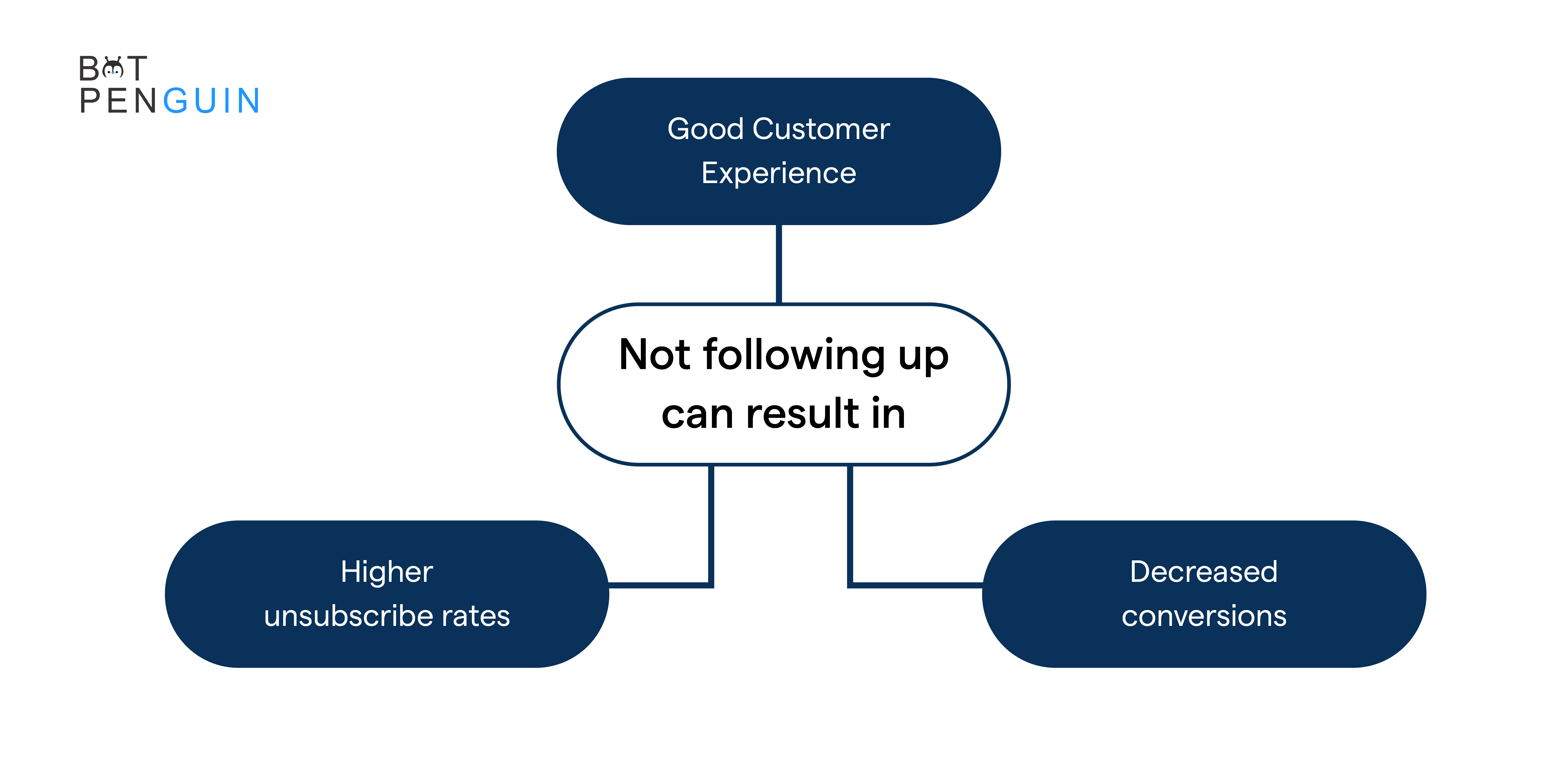
Automated emails can be a powerful tool for following up with subscribers who have taken a specific action, such as purchasing or signing up for a free trial. Failure to follow up can result in missed opportunities and lost revenue.
Failing to follow up with your subscribers can result in various issues, including
- Reduced engagement: If you don't follow up with your subscribers, they may feel like you are not interested in engaging with them, which can lead to lower engagement rates.
- Decreased conversions: Following up with subscribers can help move them through the sales funnel and increase the likelihood of conversions. You may miss out on potential sales if you don't follow up.
- Higher unsubscribe rates: If your subscribers feel like you are not interested in engaging with them, they may unsubscribe from your email list.
To avoid these issues, following up with your subscribers regularly is essential. It can involve sending automated follow-up emails to new subscribers and regularly checking in with existing subscribers to provide them with relevant content and offers.
By following up with your subscribers, you can enhance your relationship with your audience and improve the effectiveness of your email campaigns. Regular follow-up emails can keep your brand on top of their minds, leading to higher engagement rates and increased conversions.
5. Not tracking your results
Email automation can provide valuable data and insights about your subscribers and email campaigns. By tracking metrics like open rates, click-through rates, and conversion rates, you can refine your strategy and improve the effectiveness of your email automation.
Failing to track your email automation results can result in various issues including:
- Ineffective email campaigns: You need to track your results to know which emails are performing well and which are not. It can lead to ineffective email campaigns that don't engage your audience or drive conversions.
- Wasted resources: Without tracking your results, you may be investing resources in email campaigns that aren't effective, which can be a waste of time and money.
- Missed opportunities: If you're not tracking your results, you may miss opportunities to improve your email campaigns and drive better results.
To avoid these issues, tracking your email automation results regularly is essential. It involves monitoring key metrics such as open rates, click-through rates, and conversion rates, as well as analyzing your data to identify trends and opportunities for improvement.
By tracking your email automation results, you can improve the effectiveness of your email campaigns and drive better results. You can use your data to decide which emails to send, when, and how to optimize your content for better engagement and conversions. It can help you build a stronger relationship with your audience and drive more revenue.
By avoiding these common mistakes, businesses can improve the effectiveness of their email automation and engage with their audience more effectively.
Conclusion
Given the range of digital marketing options available, you should know the value of email marketing. You must customize content for your consumers if you want your emails to have an impact. You can avoid them while creating your approach now that you know the typical email marketing errors.
Email marketing is still the most common way to communicate with customers and will always be more effective than other marketing strategies. By implementing these tips, avoiding the dangers, and doing so, you may make email marketing your most lucrative channel.
If you keep these 5 potential blunders in mind as you write an email campaign, they won't be on your list of mistakes to fix.
Integrating BotPenguin into your company may greatly increase your sales by ensuring that your emails are sent to the appropriate recipients and in the appropriate format.
Revolutionize your email marketing with BotPenguin's voice dictation and automated transcription. Streamline your workflow and save time!



